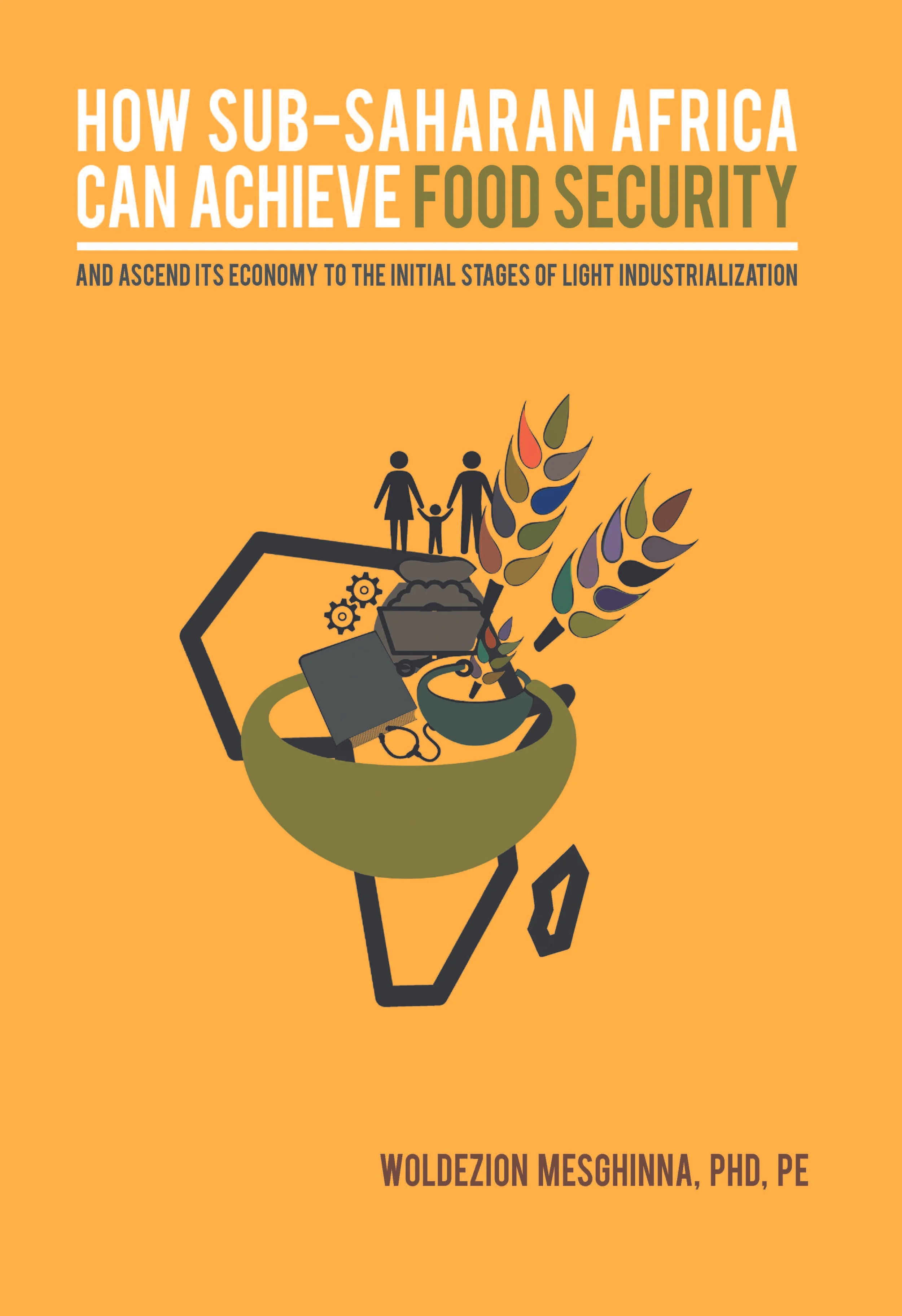The Book
The 900-page book is a comprehensive guide of science and engineering-based principles and methods aimed at helping Sub-Saharan Africa (SSA) countries achieve food security, attain access to safe and sustainable water supplies, and ascend to the initial stages of light industrialization. When these methods are implemented in conjunction with supporting government public policies and programs, they have substantial and sustainable impacts. These positive changes include: increases in domestic food production and associated improvements in living standards, reduction of poverty, and fostering of multi-sector economic growth critical to the region's eventual ascension to industrialization.
The majority of the book focuses on technical and scientific subject matters ranging from the assessment of the natural-resource inputs necessary for agricultural production, to techniques for augmenting water supplies, increasing crop yields, restoring degraded soils and ecosystems, and managing watersheds.
The book contains 21 chapters which are divided into three parts: Achieving Food Security; Maintaining Adequate Crop Soil Moisture; and Maintaining Non-Moisture Needs to the Crop, Restoring Degraded Soils, and Integrated Management of Watershed Resources.
Part I identifies the major constraints to surplus agricultural production; develops plans for how some of the constraints can be overcome; divides the subcontinent into 6 agroclimatic regions; develops methodologies for how surplus agricultural production can be attained; and develops plans for how the agrarian economy can be transformed to sustainable food security production and ascend into initial stages of light industrialization.
The primary purpose of Part II is to ensure adequate moisture is available to the crop in order to realize moderately high crop yields. The ten chapters in Part II provide a detailed and comprehensive narrative, supported by illustrations, as to what concrete actions should be taken on the ground, detailing: the intricacies and interrelationships of soil-water-plant and climate; how to quantify and estimate the availability of water supply in the rural watersheds that could be stored in water retaining structures for supplemental irrigation; techniques for estimating design floods; step by step estimation of crop water demands; demonstration of how to design and construct small and medium dams, instruction on how to maximize the use of rain water for crop use within the perimeter of the small rural farms; and explanation of how to design gravity, sprinkler and drip irrigation systems.
Part III of the book deals with the non-moisture requirements of the crop, such as crop nutrients, which are the most important crop needs after water for vigorous crop growth and high production; how to control or minimize weeds, diseases, and pests; restoration of natural resources; methods for undertaking crop establishment; integrated rural watershed land use planning and management; soil and water conservation; and how, in general, adaptable crops in the subcontinent are selected based on rainfall availability and maximum and minimum temperatures.
The book is targeted to several audiences: (1) SSA's rural farmers who may use the book to learn about science-based farm practices; (2) government agencies who may use the book as a source of best practices for the regional development and management of agricultural lands, water resources, and supporting infrastructure; (3) land managers who may use the book to learn about integrated planning and management methods for restoring degraded watersheds, range land, and other ecosystems; (4) rural engineers and technicians who may use the book as a reference in support of their work to help rural farmers improve agricultural productivity and develop water resources; and (5) instructors and teachers who may use the book to modify vocational and advanced technical school curricula so they better focus on the specific skills and tools that students require to make meaningful and appropriate contributions to SSA.
